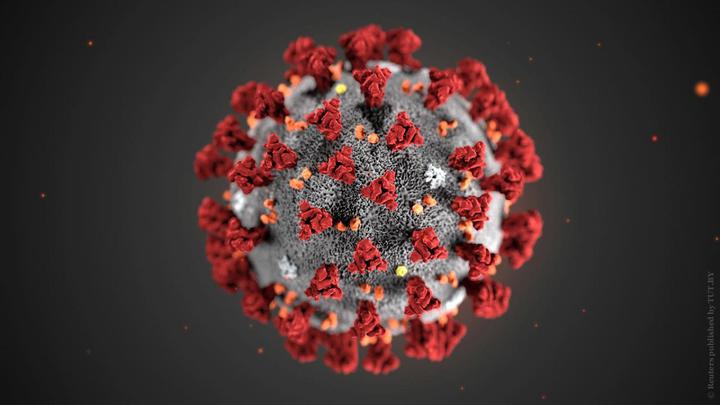Almost half of those infected with coronavirus are infected by those who “feel great”
How exactly COVID-19 can be infected, and what measures can be taken to prevent this from happening, is one of the most urgent and, at the same time, questions that have not been fully disclosed. We are used to believing that you become infected with infectious diseases if you sneezed at you, or at least an apparently sick person breathed, or if you ate with him from the same plate. Now it is becoming clear that coronavirus infection is also transmitted among people who are no different from healthy ones in appearance and well-being.
In a new article in the journal Nature Medicine, scientists report that the highest concentration of viral particles was observed in patients in whom the symptoms were just beginning to manifest, and the peak of infection occurred at this or even earlier time. About 44% of patients became infected by people who have not yet shown any symptoms of the disease. Moreover, most often at this time they were among a large number of relatives or outside the home.
To find out the proportion of asymptomatic – or, more correctly, asymptomatic – cases of virus transmission, scientists do not randomly check any potentially infected people in the population, but statistically analyze the chain of transmission of the infection. Here epidemiologists need to evaluate two key parameters. Firstly, the incubation period of the disease is the time during which the person is already infected, but the infection does not manifest itself. Secondly, the serial interval – this is the mean time between the onset of symptoms in the transmission chain: for example, if Alice infected Bob, and it is known that Bob’s cough started three days later than Alice’s cough, then three days will be serial interval.

Both parameters can be evaluated independently of each other, and by comparison they can help to estimate the same proportion of asymptomatic infections: if the serial interval in the population is on average less than the incubation period, it means that some infections occur before the symptoms begin to manifest. And to calculate this fraction, you need to compare the distribution of these two values. This, however, is not enough: it is also necessary to evaluate how the obtained values are consistent with the amount of virus that is present in saliva and other secretions, and how these values change over time.
During an outbreak of another coronavirus epidemic, the severe acute respiratory syndrome SARS / SARS in 2003, it became clear that the peak of the patient’s ability to become infected occurred in the period 7-10 days after the onset of primary symptoms. Therefore, quarantine measures, which are most convenient to apply to obviously ill people, worked in this case very effectively. Influenza, for example, often becomes significantly contagious even before the onset of the main symptoms or at the very beginning of their manifestation.
In a paper published in Nature Medicine, researchers analyzed the course of the disease in 94 patients with confirmed coronavirus infection (none of them were critically severe patients). Throat swabs were taken within 32 days after the onset of symptoms. It turned out that the peak concentration of the virus in the mucous membranes begins around the time of the onset of the first symptoms of the disease, and then decreases and practically disappears by about 21 days. Neither gender, nor age, nor the severity of the human disease affected this.
Scientists correlated these results with official data from China, according to which the serial interval for the current coronavirus infection is on average 5.8 days, and the incubation period is 5.2 days. Using the construction of a mathematical model, they calculated that people begin to be infectious on average 2.3 days before the onset of symptoms, and the peak of the ability to infect falls on the period of about 14-16 hours from the first manifestation of symptoms. Then, within a week, the virus’s ability to become infected decreases until it disappears completely.
In other studies, scientists reported that the virus’s RNA can be detected in the blood for up to 20 days and even longer (in some cases, up to 37 days), but its infectivity, apparently, really drops significantly, since it becomes impossible to cultivate it in laboratory conditions.
Attempts to estimate the real number of people infected from asymptomatic carriers have already been made in Singapore and Tianjin. If in the work published in Nature Medicine, the number of people infected from such carriers is estimated at about 44%, then in other studies this estimate was 48% or even 62%. Scientists suggest that this may be due to the introduction of strict quarantine measures that prevented infection in Singapore and China at the later stages of the disease of each infected person.
The data from the work cannot be considered completely complete. For example, the moment of the onset of primary symptoms was noted retrospectively: patients themselves spoke about this after they were diagnosed. In addition, scientists note that the more reliable information about a particular case of transmission, the longer the serial interval, and this suggests that, on average, these intervals are somewhat underestimated. Finally, patients received treatment, which could affect the concentration of the virus in the mucous membranes, and, accordingly, data on the rate of its decrease could also be underestimated relative to the drug-free scenario.
Nevertheless, scientists have shown that, on average, an infected person is likely to infect others two to three days before the onset of symptoms of the disease and that the concentration of the virus in the blood is already at its maximum on the day the primary symptoms occur. This, of course, is worth taking into account: you can unjustifiably consider yourself, your neighbor or a courier who has arrived completely healthy, despite the fact that the potential source of infection also does not suspect anything and feels good.










